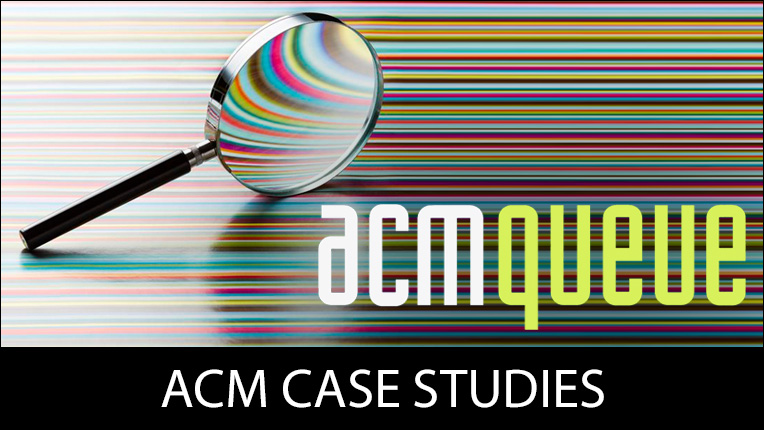ACM Distinguished Member Frequently Asked Questions (FAQs)
This information is intended to complement the Nominating Process page. Please see that page for a general description of what a nomination includes and how it is submitted.
What does the Committee look for in a nomination?
The areas of achievement evaluated for Distinguished Member are listed under Nominating Process. Use your limited space carefully to describe the candidate’s impact on the profession; it should be understandable to a non-expert. Be brief, but also explicit. Avoid superlatives and overworked words such as “seminal” and “unique.” Instead, indicate the importance of the candidate’s work by describing its specific consequences (e.g., a new line of research taken up by others, a system or product in widespread use, an important conjecture resolved). Don’t include URLs to papers or additional information (they will be ignored); what you and the endorsers write must contain all the information the committee needs for its evaluation.
The Selection Criteria section of the Nominating Process page provides more detail.
Note that the criteria for ACM Distinguished Member are significantly different from those for academic promotion. Both breadth and depth of impact are considered. A recycled promotion case, however strong, is unlikely to be effective.
How should I choose my endorsers?
The choice of endorsers is crucial. The committee tends to trust the judgment of endorsers who are recognized authorities in their field, such as ACM Fellows. The nomination package should also include endorsers who are intimately familiar with the work of the candidate and can provide firsthand testimony of its importance. Endorsers in the first category can focus on qualitative assessment of the candidate's merit; endorsers in the second category should focus on providing factual information on the candidate's professional activities and their impact that goes beyond what was said in the nomination.
It is important to select endorsers from a variety of contact points in the candidate’s career. For a strong case, choose endorsers from both inside and outside the candidate’s own organization, but be sure that each endorser has personal knowledge of the candidate’s contributions. In addition, try to choose endorsers who can give evidence of a global reach of the impact of the work and contributions
Do the endorsers need to be ACM Fellows?
At least two of the endorsements must be ACM Professional Members, and it is strongly recommended, but not required, that these endorsements be from ACM Fellows or ACM Distinguished Members.
Why should I contact the endorsers in advance?
Since endorsements must be completed prior to the deadline, it’s critical for the nominator to verify the contact info (email) provided and to make sure each endorser understands the submission schedule and will be able to respond in time.
The nominator should emphasize and remind the endorsers of the deadline date for submitting and confirming the endorsements (a two-step process). You should also tell each endorser what she/he will need to do and make sure their email will accept an automated message from “[email protected]”, since that email will have the URL/link to confirm the endorsement after it has been submitted by the endorser. Endorsement requirements are listed under Nominating Process, so point them to that webpage or include the information in your message.
The nominator should ask each endorser to send a draft of their submission to the nominator in advance of the deadline so that the nominator can verify that the endorsement properly supports the nomination. This “deadline before the deadline” leaves time for any corrections/adjustments/improvements in the endorsement that the nominator deems necessary. See the Advice to Nominators and Endorsers for more details.
What suggestions I should give the endorsers?
Tell the endorsers to be sure to include concrete details on why they think the candidate has fulfilled the requirements for Distinguished Member. Short, vague endorsements that essentially just say the candidate is qualified, or that only re-state the candidate’s accomplishments from the nomination are not effective. Consider this example: “I have known the candidate for ten years. The candidate has technical project leadership and has published over 30 papers in journals and conferences. They also have several professional contributions to professional societies and has served on at least ten conference committees. I believe the candidate meets the technical leadership, technical contributions and professional contributions criteria of Distinguished Member.” As an endorsement, it is weak because the endorser does not appear to know the candidate’s work well, does not explain what impact the candidate’s work has had on the community, and echoes the criteria for Distinguished Member without providing details about how the candidate meets them.
It is up to the nominator to help endorsers understand what is required. Endorsements that appear to be derived from a template (in terms of content and/or style), or that merely echo portions of the nomination statement, will actually weaken the case for your candidate. A successful package will have endorsements describing the most important aspects of the candidate’s work from different, personal perspectives.
The final section of the Advice to Nominators and Endorsers document contains concrete guidance to help endorsers create informative, effective submissions. It is strongly recommended that, as part of the initial contact with each endorser, the nominator provide a copy of the portion of the Advice document.
After submitting a nomination/endorsement, can I access it to make minor changes?
No. However, if there is a minor correction/change that is important, please contact [email protected].
How can I check on the status of a Distinguished Member nomination?
After you submit the nomination, an endorsement tracker URL will be sent to you in an email from “[email protected]”. The tracker allows the nominator to see if endorsements have been submitted and/or confirmed; you will need to log in with your ACM Web account.
An endorser(s) submitted the endorsement after the deadline – must I resubmit the nomination?
If the nomination does not have at least four (4) endorsements submitted and confirmed by the deadline, it will not be considered that year. An updated nomination will need to be submitted the following year, although the existing endorsements are retained at ACM Headquarters and may be re-used.
What if an endorser did not receive the email message to confirm his/her endorsement?
The email may have been caught in a spam filter, or the email address may have been entered incorrectly. Please have the endorser contact [email protected] right away.
An endorser incorrectly answered "No" to one of the three qualifying questions, and now the endorsement has been rejected. Can it be fixed?
Ask your endorser to contact [email protected]. We will make the correction and send your endorser a URL to confirm the change.
In trying to confirm an endorsement, the endorser received an error message saying it was a bad URL – what should he/she do?
Be sure to cut and paste the entire URL into the browser address field (remove any hard returns). If there’s still an error, contact [email protected].
When will I know if my nominee has been selected and how will I be notified?
The committee normally completes its selections within 2 months of the deadline. All nominators whose submissions were complete by the deadline will receive a notification once the selection process is finished.
If my nominee is not selected can I resubmit the nomination?
You may submit a new nomination after two review cycles have passed. For example, if a nomination was submitted in August 2022 and was not selected, that candidate would be eligible for renomination for the August 2025 nomination deadline. It may help you to know that each nomination is considered independently of the others being submitted, so if yours is unsuccessful it’s because the candidate didn’t meet the criteria for Distinguished Members, or because the nomination and/or endorsements were too vague, too formulaic, or didn’t provide adequate evidence of impact.
Lifelong Learning
ACM offers lifelong learning resources including online books and courses from Skillsoft, TechTalks on the hottest topics in computing and IT, and more.

ACM Case Studies
Written by leading domain experts for software engineers, ACM Case Studies provide an in-depth look at how software teams overcome specific challenges by implementing new technologies, adopting new practices, or a combination of both. Often through first-hand accounts, these pieces explore what the challenges were, the tools and techniques that were used to combat them, and the solution that was achieved.

